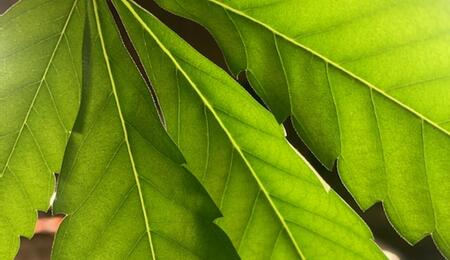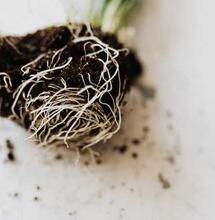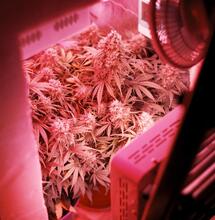Magnesium

Magnesium chemical element Mg is the 4th most abundant element on the earth. It makes up 13% of the planet's mass and is the 3rd most abundant element found in seawater. It is produced from giant ageing stars, which explode and expel magnesium into the atmosphere.
A magnesium deficiency is indicated by the older leaves yellowing from the tip or edges then moving inward to the veins. The leaves can also appear purple, red or brown. If left untreated, the leaves and eventually the whole plant can die. The yellowing affects the older leaves first in contrast to other nutrient deficiencies. This is because magnesium is mobile within the plant, meaning that it can move it to where it needs it most. This would be to the new leaves to aid their growth in this instance.
Magnesium deficiency is often caused by the pH of the plant's roots being too low (acidic). The roots cannot take up magnesium when the pH is out of range. The ideal range for magnesium uptake is between pH 6.5-7. Deficiency can also be caused by the growing medium or system you are using. If the medium is not rich in organic matter, it is very light, sandy or acidic; it can lack magnesium. High potassium levels within your medium can also limit the amount of magnesium that the plant takes up, as can overwatering, which leaches magnesium out of sandier, lighter, medium mixes.
First, check your pH at the roots to correct a magnesium deficiency. If it is too low (below 6.5), flush your plants with clean pH'd water containing a regular dose of nutrient feed for the correct stage of your growth. This will remove any other nutrient salts, like potassium, that may be preventing the magnesium from being absorbed by the plant. It will also help restore the pH to the correct levels (6.5-7). To check that the pH has altered to the proper range, you should be testing the runoff water. Doing so may also help pinpoint another nutrient making the pH off-balance.
Epsom salts, which is primarily made up of magnesium, is a popular supplement that you can add in the face of a magnesium deficiency at the rate of 1 teaspoon to 1 gallon of water. This alone will not cure a magnesium deficiency. You cannot fix a deficiency just by adding more magnesium. A whole host of things causes a magnesium deficiency. Things such as a lack of or abundance of other nutrients like iron, calcium, or potassium which lock out the magnesium.
Magnesium deficiencies often occur alongside calcium and iron deficiencies. One of the best ways to avoid or correct a magnesium deficiency is to use Cal-mag. Cal-mag gives you a balance of associated elements, meaning you will see improvement faster. Within a week, you should see healthy new growth.
Magnesium toxicity does not manifest any physical symptoms. If there is too much magnesium, it can inhibit calcium uptake, leading to a calcium deficiency. You will see stunted growth and dark coloured leaves. In this instance, flush the medium with pH'd water to bring it back within range. If you still see problems, you should check for other nutrient deficiencies.



.png)




